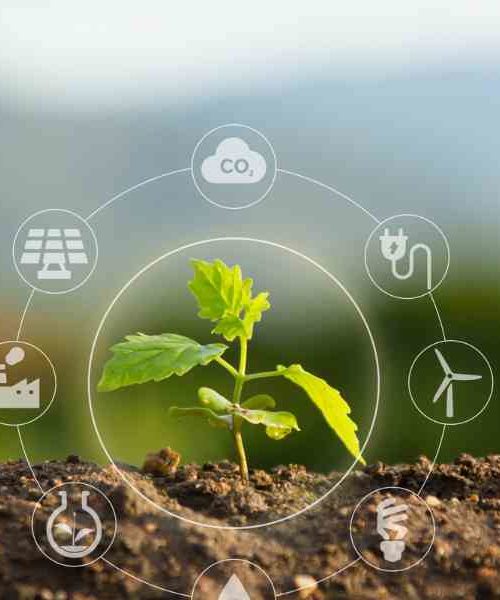Are you looking for ways to help the environment and become more sustainable? Then this blog post is for you! We’ll take a look at what environment sustainability is, why it’s important, and how to make small changes that can lead to big results.
What is Environmental Sustainability?
Environmental sustainability is the practice of responsibly interacting with the environment in order to preserve natural resources and protect global ecosystems.
It involves the rates of renewable resource harvest, pollution creation, and nonrenewable resource depletion that can be continued indefinitely. In other words, it is about being mindful of our actions and how they impact our planet. In this way, we can enjoy healthy lives now and in the future.
Why is Environmental Sustainability Important?
Environmental sustainability is important because it helps us protect our environment and ensure that future generations can benefit from a healthy and stable planet. It is essential for preserving natural resources, reducing pollution, and preserving global ecosystems.
Rapid population growth has resulted in increased energy usage, food consumption, and human-made resources, putting our planet at risk of being overused and degraded. Additionally, climate change and environmental degradation have further highlighted the need for more sustainable practices to protect our planet.
By implementing environmentally conscious policies and regulations, we can reduce the amount of non-renewable resources being used and polluting the environment. Additionally, we can create eco-friendly homes and technologies that promote environmental sustainability. Doing so will help us ensure that our planet remains healthy for generations to come.
The United Nations Definition of Environmental Sustainability
The United Nations, through the Brundtland Commission, has defined environmental sustainability as “meeting the needs of the present without compromising the ability of future generations to meet their own needs.” This definition highlights the need for balance between economic growth and environmental protection, and for an understanding that our current actions can have long-term consequences.
UNEP has focused on monitoring and managing a number of environmental aspects, such as greenhouse gas inventories and mitigation, waste management, and other environmental considerations.
Environmental sustainability is our responsibility to conserve natural resources and protect global ecosystems in order to ensure health and wellbeing both now and in the future. To achieve this goal, governments must adopt policies that promote environmental sustainability, while also addressing the challenges posed by climate change, environmental degradation, lack of public awareness and lack of political will.
The Role of Environmental Sustainability in Our Lives
The role of environmental sustainability in our lives is undeniable. It is our responsibility to protect the earth’s resources, not only for our own sake, but also for the sake of future generations.
Sustainable practices allow us to balance our needs with the needs of the environment, so that we can continue to use resources without depleting them.
This includes conserving energy, reducing waste and pollution, protecting ecosystems, and using renewable sources of energy. By embracing sustainable practices, we can ensure that our planet remains healthy and viable for years to come.
How to Achieve Environmental Sustainability
There are a number of steps that individuals and organizations can take to help achieve environmental sustainability. One of the most important steps is to reduce, reuse and recycle.
This means reducing the amount of resources consumed, reusing materials where possible, and recycling items that would otherwise end up in a landfill. Another key step is to switch to renewable energy sources such as solar and wind power. Furthermore, reducing energy consumption by changing our habits and purchasing energy-efficient appliances can help us move closer to achieving environmental sustainability. Finally, planting trees, conserving water, and avoiding the use of chemicals can also help us reach our goals.
By following these steps, we can all do our part in creating a sustainable future for generations to come.
Examples of Environmental Sustainability
When it comes to examples of environmental sustainability, there are a variety of practices and initiatives that can be implemented to reduce our negative impact on the environment.
Renewable energy sources, such as solar, wind, hydroelectric, and biomass energy are some of the most popular forms of sustainable energy.
Furthermore, sustainable agriculture practices can be implemented in order to maximize the efficiency of resources while reducing environmental damage. Additionally, recycling plastics, metals, and minerals can help to reduce the amount of waste being produced and entering landfills.
Finally, reducing the amount of energy used by businesses and households can significantly reduce the amount of carbon dioxide produced into the atmosphere. All these practices are essential in order to ensure that we are taking proper steps towards a more sustainable future.
Benefits of Environmental Sustainability
Environmental sustainability offers a plethora of potential benefits for both individuals and society as a whole. It can help conserve natural resources, reduce pollution and waste, and improve the quality of life for future generations.
It can also create jobs and economic opportunities in renewable energy and other green industries. Additionally, it can help to reduce emissions that cause global warming, leading to a healthier environment for everyone. Finally, it can help to enhance social equity by promoting access to clean water, air, and energy resources for all people.
By choosing environmentally sustainable solutions, we can ensure a healthier and more prosperous future for all.
Policies and Regulations to Promote Environmental Sustainability
Policies and regulations are essential to promote environmental sustainability. Governments around the world have implemented various laws and regulations to protect the environment and ensure sustainable development.
These policies are designed to reduce environmental impact, control air and water pollution, conserve natural resources, promote renewable energy sources, and encourage environmental protection.
Governments also provide incentives for businesses to adopt environmentally friendly practices and technologies. Additionally, businesses can create their own policies to support environmental sustainability initiatives.
By implementing these policies and regulations, we can ensure a healthier environment for future generations.
Challenges to Achieving Environmental Sustainability
Achieving environmental sustainability can be a difficult task, as there are numerous challenges that must be faced. Among the most pressing of these is climate change, which has already had a significant impact on the planet, leading to rising temperatures and rising sea levels.
Additionally, environmental degradation caused by activities such as logging, mining, and overfishing has resulted in a decrease in biodiversity and an increase in pollution. On top of this, there is often a lack of public awareness and political will when it comes to investing in sustainable practices and technologies.
All of these factors create considerable difficulties when it comes to achieving true sustainability.
Climate change
Climate change is a major challenge to achieving environmental sustainability. It is caused by the increase of greenhouse gases in the atmosphere, resulting in the rise of global temperatures. Climate change affects all aspects of our lives, from air and water quality to food production, health, and economic activity. It has already caused more frequent droughts, floods, and extreme weather events such as heatwaves.
To address this problem, governments around the world need to implement policies and regulations that reduce greenhouse gas emissions and promote renewable energy sources.
People also need to be more aware of their own impact on the environment and take action to reduce their carbon footprint.
Environmental degradation
Environmental degradation is a major challenge to achieving environmental sustainability. It occurs when natural resources are used beyond their capacity, leading to significant environmental damage. Examples of environmental degradation include deforestation, air and water pollution, and soil erosion.
These activities disrupt the delicate balance between humans, plants, and animals that make up our planet’s ecosystems, leading to a decrease in biodiversity, water shortages, and other issues. In addition to the direct effects of pollution and habitat loss, these activities can lead to changes in climate patterns and increased levels of greenhouse gases in the atmosphere.
To combat this issue and promote environmental sustainability, governments should strive to implement policies that encourage sustainable practices and discourage those that harm the environment.
Lack of public awareness
One of the major challenges to achieving environmental sustainability is lack of public awareness.
Many people are simply unaware of the impact their everyday decisions have on the environment, and how they can help protect it. Without a comprehensive understanding of the issues, it is difficult for individuals to make sustainable choices on their own. Furthermore, governments and other organizations may not take appropriate action to promote sustainability if they are not aware of its importance.
This means that there must be increased efforts to raise public awareness about sustainability, including through education, media campaigns, and other forms of outreach. Only then can people be empowered to make meaningful changes in their lifestyles and help create a more sustainable future.
Lack of political will and leadership
Political will and leadership are essential components in achieving environmental sustainability. Unfortunately, they are often lacking in the current climate. Governments and leaders must take a proactive stance in order to create the necessary conditions for sustainable development.
This includes providing adequate funding, enacting regulations to protect the environment, and promoting public awareness of the importance of sustainable practices. However, the lack of these elements can make it difficult to implement effective sustainability policies. Without strong political will and leadership, progress towards a more sustainable future can be slow or even non-existent.
Conclusion
In conclusion, environmental sustainability is an essential goal for both the present and the future. Without it, resources will be depleted, climate change will become more serious, and the quality of life for future generations will suffer. In order to achieve environmental sustainability, governments must implement policies and regulations that promote sustainable practices, as well as increase public awareness of the importance of environmental sustainability. Additionally, individuals can take steps to reduce their own carbon emissions, conserve energy, and reduce their overall impact on the environment. By taking these steps, we can ensure that future generations can live in a healthy and sustainable world.







